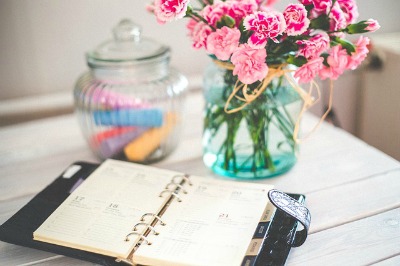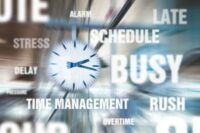If you’re following one of the several versions of the keto diet then you know that the most important component of the diet is the food.
Yes, I know it sounds funny to say it. Most people understand the whole cut out carb thing and the eating fat is ok thing. But the food, or actually putting together meals that they enjoy, seems to elude them. They look online for posted meal plans and try to follow them. I know I sure did when I started out.
For me, every time I found a meal plan, I would not like half the meals listed so following that plan wasn’t helpful.
Or they sounded good but took too much cooking and I was limited on time.
Or too many ingredients that I had to purchase to make just one meal.
Over the years I’ve discovered some keto (or more like lazy keto) meal plan tips that helped with my weight loss as well as maintaining it for 14 years. Maybe they will help you too!
Start a meal tracking planner
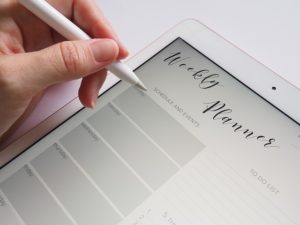
You’ve spent time searching for recipes, saving them, perhaps printing them, thinking about them and even ultimately making them. Why not write this information down so you can refer to it in the future?
A meal tracking planner doesn’t have to be anything big or elaborate. It can be a simple note book or even a purchased date planner. Of course if you are already a planner and use something like the Erin Condren, Recollections or Happy planners then you’ve got a jump on things.
I have a variety of planners. A larger desk top planner (planner on the bottom) for my everyday personal stuff. A planner that I carry in my purse (dark blue planner on the top left) to keep track of personal and work related things and a smaller week at a glance type planner that is my keto meal tracker (light blue planner on the top right).
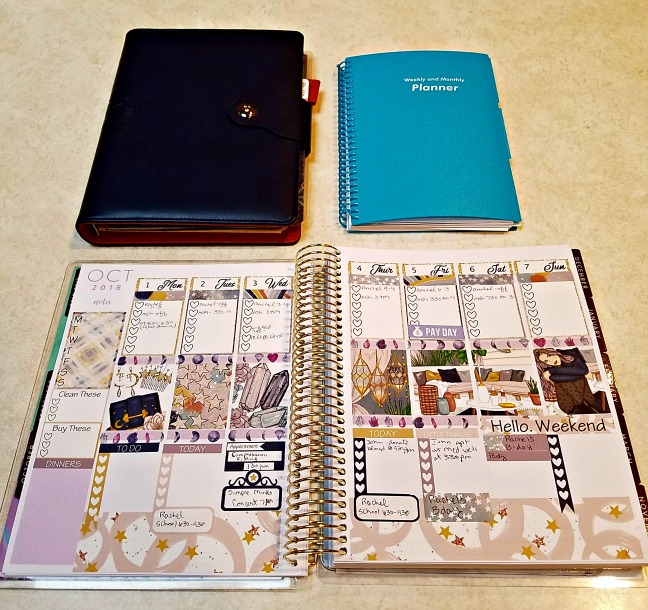
If you’ve put time into looking for recipes, finding out the nutritional information and worked out what to eat for a day then you might want to record it somewhere. Not only does it make future meal planning easier but you have something to remind you what worked and what didn’t work.
And if you’ve had a weight loss stall or even started regaining you can use this as a tool to try to figure out what was working and what changes were recently made that maybe aren’t the best.
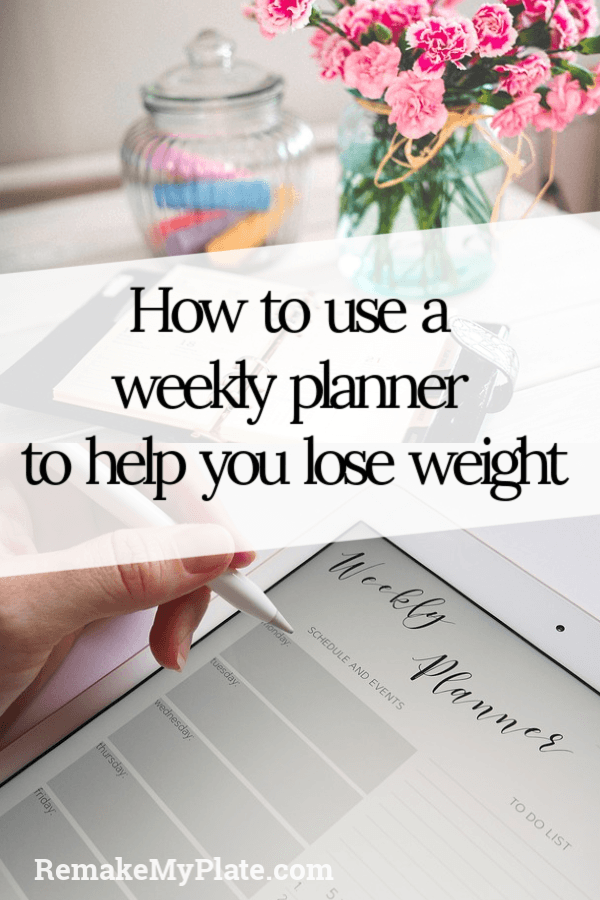
Remember that day when you tried that recipe and thought it was great but was a bit too salty or perhaps the next time you make it you’d like to try to add in something else? Well if you noted it in your meal tracker then you won’t forget to cut back on the salt or make the change you were thinking about.
How about that day that you had planned out to have 20 grams of carbs and included super easy meals? Do you remember which ones you used when it’s a month later? Well you would if you put it in your meal tracker!
If I have planned out the meals for a day, even if it is just a general plan, and I figured out how many carbs then I want to keep that information handy so I don’t have to keep doing the same work over and over again.
I know many people rely on their cell phones for most things but I find a simple weekly planner makes looking information up faster and easier then trying to set up a file on the phone.
And, in case I want to have the information on my phone, I simply take a picture of the planner page. I have a photo album on the phone designated for these pictures so I can refer to them at times when my planner isn’t handy.
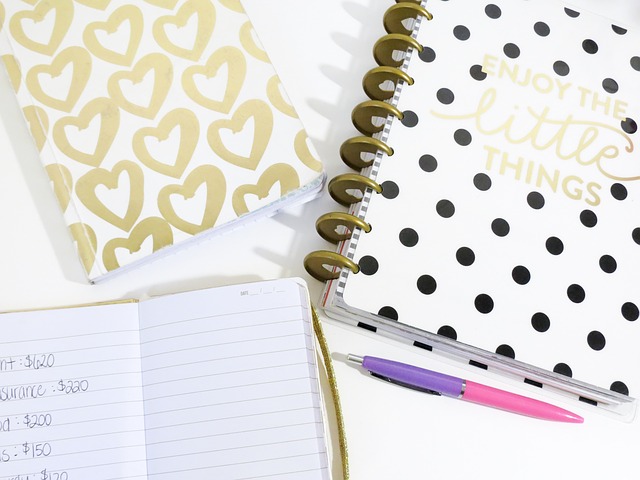
What can you include in your meal tracker?
List the foods you’ve eaten:
I write down what foods I’ve eaten or any meals I’ve made and the carb count.
Log recipe sites:
If I used a recipe from a site than I try to include the name of the site. This way, if I want to make it again, I know where to go for the recipe. In my phone I’ve saved a link to the various recipe so when I want to make them I simply visit the site.
Add in fun pages to keep you moving toward your goals:
You can also add some fun tracker pages in to track your weight loss as well as any other health related topics you might be attempting to achieve such as getting in all your water, taking your vitamins, getting some exercise. Here’s an example of some health trackers using a bullet planner set up or this one that uses sticky notes to log in meals. The sticky notes can then be reused for future meal plans.
A successful meal plan starts with tomorrow
One of the best ways to stay on track is to begin planning for the following day. You’ll get a great start to your day if you have a plan in place. Even if things come up and you deviate from your plan you will still find that having a plan in place is beneficial.
If I have not planned out a week of meals, or even a few days worth, then the night before I take a few minutes to think about what I am going to do the next day. What type of meal will we have? Which meat or vegetable will be the main focus of the dish?
A few minutes of planning now allows me to do several things:
-
It keeps me on plan. By having a plan I have something to follow and don’t have to deal with making quick, last minute decisions that often aren’t the best.
-
Helps me reduce stress. Knowing what I’m going to make means I can take things out of the freezer ahead of time and make sure I have ingredients. Nothing adds to dinner time stress like trying to thaw something in order to prepare the meal. Or worse, finding out part way through your recipe that you’re out of a main ingredient.
Plan your main meal first
Over the years I’ve found that instead of my carb count being slowly spread out over the day the majority is actually eaten during one or two meals. I try to plan those first.
If I have plans to make a rollup sandwich I know that this meal will probably take 10 grams of carbs. It means that the other meals, and any snacks, need to be lower. If I don’t plan something out then you might find out that you’ve been over doing it by the time the last meal of the day comes around.
Plan a snack or two
Want to avoid a weight loss stall or, even worse, regain? Then be prepared by planning a snack or two as part of your day. You know the chances of snacking are probably pretty good. I don’t know many people who don’t snack. If it’s going to happen then you may as well have a plan in place.
Some of my favorite snacks to keep on hand include Blue Diamond Wasabi Almonds, sugar free Popsicles, sugar free jello, Quest chips and cheese sticks. There’s a good chance that I might be relaxing later on in the evening, watching a favorite show and thinking it might be nice to munch on something. By planning a snack to be available I won’t end up going over my carb count at the end of the day. And I won’t end up regaining weight because I’m consuming more calories than I should.
Using a meal planning tracker has been one of the best things to help me stick to my keto diet. Logging in basic meal information helps me to stick to the number of carbs I want to eat. It provides me with a list of meals that can be easily repeated with the carb counts already calculated. It lets me see the successful days that I want to repeat and those that could use a little work. It’s helped to point out where my eating is going off track if I start to regain. It makes doing this keto thing a little less crazy.
If you are looking for other low-carb/keto recipe ideas, be sure to check out our growing Recipe Index full of low-carb/keto recipes!
Join us on Facebook to be part of our interactive Keto and Lazy Keto discussion or follow us on Instagram, Pinterest, or subscribe to our newsletter (see below) and be the first to know when we post a new recipe!
[mc4wp_form id=”3690″]
Disclosure: This post may contain affiliate links. I may earn a small commission from purchases made through these links, at no additional cost to you. Anything recommended on this website is a products I have used and loved. Thank you for supporting Remake My Plate and allowing me to share my experiences with you.
Share this recipe with a friend!
Here's some recipes you might enjoy:




